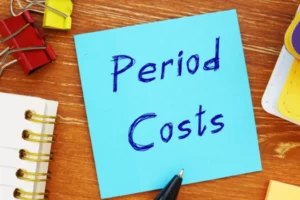Accounting is one of the most significant spheres of business management. Accounts used for different types of money flow. All entrepreneurs are acquainted with the fundamental account groups, such as income and costs. But financial consultants of.ten use temporary and permanent accounts to correctly record financial dealings.
The definition of temporary accounts
The temporary account it’s an account that opens each year with zero balance. At the end of the period, accountants move the final balance into different items of financial documents. Temporary accounts are ready for accumulation of the next set of transactions. They are used to recording transactions that affect the profit and loss of the company. The balance should increase during the year; it seldom decreases.
How temporary accounts work
Temporary accounts help keep the correct records of commercial activity during a specific period. Nominal accounts are similar to interim statements. They guarantee that transactions acted in one time don’t intermix with the information from another period.
For example, one company received an income of $60000 during 2020 and $25000 in 2021. If accountants forget to close the temporary account in 2021, earnings will be transferred to the 2022 year and be recorded as $85000. This information can lead to erroneous conclusions and mistakes in tax calculation.
Because temporary accounts operate only in the short-term period, all data are moved to relevant permanent items of the balance sheet and kept there for a long time. Permanent reports show a complete picture of an organization’s transactions.
The primary type of temporary accounts
Specialists can use four of the most common types of nominal accounts
- Revenue. It shows the total earnings of the company. Such accounts must be closed at the end of the fiscal year. Specialists form a debit entry for income balance to liquidate the revenue accounts. It’s helpful to know that sales accounts, interest income accounts, and earnings on the sale of assets accounts are the type of temporary accounts.
- Expenses. They are an essential part of any business; they allow the company to develop. Expenses temporary accounts inform us about the sum of money that the company spent on different operations, including advertising and supplies. Before closing the account, the amount transfers to the income statement by crediting the cost account.
- Income summary. It’s a temporary account where revenues and expenses are recorded. The net income or net loss appears after closing these two accounts.
- Drawings and dividends. Entrepreneurs often open a drawing account to withdraw capital for their own needs. It’s the distribution of the firm’s revenue to the businessman. Today small enterprises, partnerships, and S-Corp prefer drawing accounts. As for C-Corporations used to distribute share capital and the company’s earnings in the form of dividends. The particular software will transfer its balance to shareholders’ funds or capital accounts when the accounting reference period ends.
We advise automating the processes of tracking and closing temporary accounts.
Temporary account vs. permanent account
It’s impossible to know about some differences between temporary and permanent accounts. You can see the main dissimilarity in the table below.
| Feature | Temporary Account | Permanent Account |
| Account closing date | They must be closed at the end of each fiscal year. | There is no need to close them. |
| Profit and loss statement or balance sheet | All items in the profit and loss statement are temporary. | All balance sheet items are permanent. |
| The move of balances | Financial specialists don’t need to roll forward the temporary account balances to the following period. | Financial specialists must roll forward the temporary account balances to the following period. |
| Brought forward of balances | As we know, the balances of temporary accounts don’t carry out. That’s why credits also were brought forward. | Such accounts may or may not have brought forward credits in different cases. |
| Another name | They are often called nominal accounts. | They are often called real accounts. |
| Is the post-closing trial balance? | After preparing the trial balance, all temporary accounts are zeroed out. | We’ll deal only with permanents accounts. Post-closing trial balance as credits are carried forward |
| The most common examples | Cost of goods sold, interest expenses, revenues, loss accounts, etc. | Accounts payable, accounts receivables, retained earnings, inventory, etc. |
Both types of accounts could be used to track financial operations and generate correct financial documents. The critical difference is that accountants must reset to zero temporary accounts before the new period starts. As for the permanent accounts, they never zero out. Financial experts keep them open and carry out the balances next year.
In conclusion, permanent accounts help to understand the ongoing company’s progress. At the same time, temporary accounts show the main achievements within a certain period.
How to close temporary accounts
You can close temporary accounts without any problems. Initially, the particular accounting program transfers balances of income documents from nominal accounts to net profit.
Afterward, this revenue or losses move to the retained earnings items in a liability and asset sheet. Finally, earning statement accounts and net profit are reset to zero.
People, who have a drawing account, must also reduce the amount of software to zero and transfer it to the company’s net assets.
Always try to successively close the temporary accounts simultaneously to make correct and logical comparisons. The frequency can be different:
- Most business owners do this once a year.
- Some organizations zero out their accounts every quarter.
Temporary accounts help to avoid confusion about the balance between different accounting periods. The main reason for their use is to evaluate profits and capital gains. It’s important to correctly classify every account as a temporary account because any mistake can erode the organization’s asset base.


















